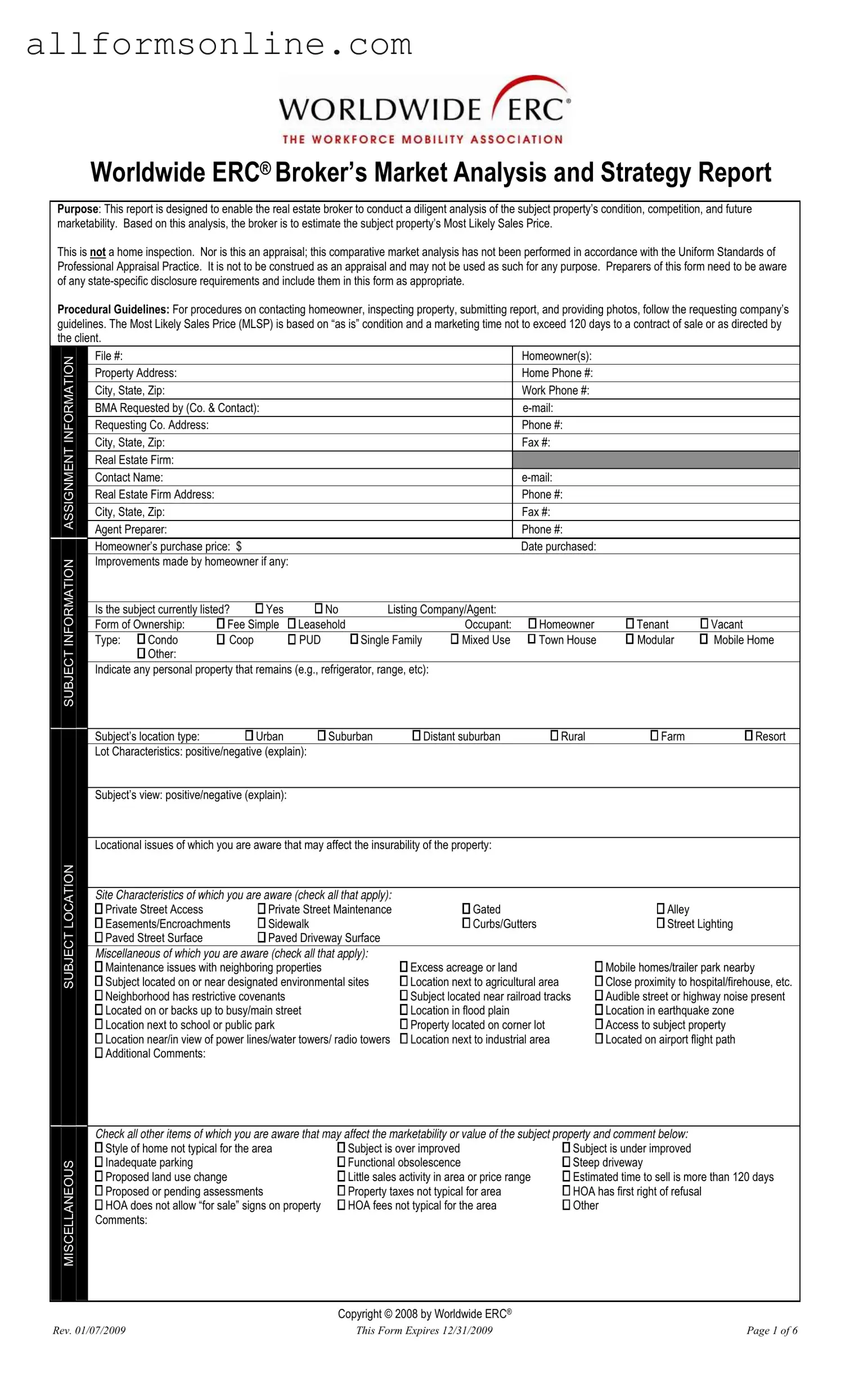What is the purpose of the ERC Broker Market Analysis form?
The ERC Broker Market Analysis form is designed to help real estate brokers conduct a thorough analysis of a property’s condition, competition, and potential marketability. This analysis ultimately aids in estimating the property’s Most Likely Sales Price (MLSP). It’s important to note that this form is not an appraisal or a home inspection; rather, it serves as a comparative market analysis. Brokers must also consider any state-specific disclosure requirements when using this form.
How should brokers prepare for using the ERC Broker Market Analysis form?
Brokers should follow specific procedural guidelines when preparing the analysis. This includes contacting the homeowner, inspecting the property, and submitting the report according to the requesting company’s guidelines. Additionally, brokers should gather all necessary information about the property, including its condition, improvements made, and any relevant locational issues that may affect its marketability.
What information is required on the ERC Broker Market Analysis form?
The form requires various pieces of information, including the homeowner's contact details, property address, and specifics about the property itself. Brokers must document the property’s condition, any improvements made, and its current listing status. They also need to assess the neighborhood and broader market area, including property values and market trends. This comprehensive data collection helps in forming a well-rounded analysis.
What factors influence the Most Likely Sales Price (MLSP) on the form?
The MLSP is influenced by several factors, including the property’s condition, location, and the current market environment. Brokers must evaluate the property “as is” and consider a marketing time frame of no more than 120 days. They should also analyze comparable properties in the area, taking into account their sale prices, days on the market, and any concessions offered to buyers or brokers.
What should brokers keep in mind regarding state-specific requirements?
Each state may have unique disclosure requirements that brokers must adhere to when filling out the ERC Broker Market Analysis form. It’s essential for brokers to be aware of these requirements to ensure compliance and accuracy. This may involve including specific disclosures about the property’s condition or any known issues that could affect its insurability or marketability.
